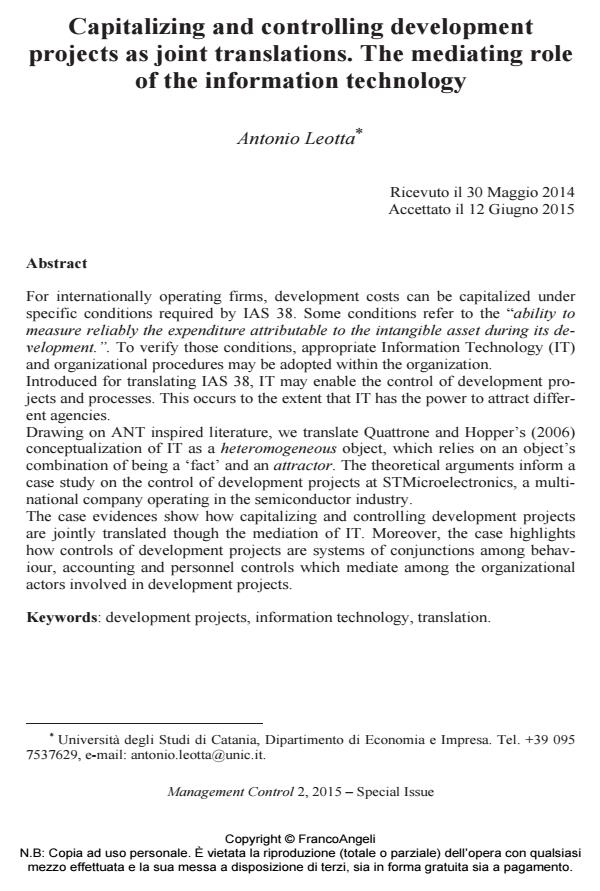Capitalizing and controlling development projects as joint translations. The mediating role of the information technology
Journal title MANAGEMENT CONTROL
Author/s Antonio Leotta
Publishing Year 2015 Issue 2015/2
Language English Pages 34 P. 101-134 File size 197 KB
DOI 10.3280/MACO2015-002005
DOI is like a bar code for intellectual property: to have more infomation
click here
Below, you can see the article first page
If you want to buy this article in PDF format, you can do it, following the instructions to buy download credits

FrancoAngeli is member of Publishers International Linking Association, Inc (PILA), a not-for-profit association which run the CrossRef service enabling links to and from online scholarly content.
For internationally operating firms, development costs can be capitalized under specific conditions required by IAS 38. Some conditions refer to the "ability to measure reliably the expenditure attributable to the intangible asset during its development". To verify those conditions, appropriate Information Technology (IT) and organizational procedures may be adopted within the organization. Introduced for translating IAS 38, IT may enable the control of development projects and processes. This occurs to the extent that IT has the power to attract different agencies. Drawing on ANT inspired literature, we translate Quattrone and Hopper’s (2006) conceptualization of IT as a heteromogeneous object, which relies on an object’s combination of being a ‘fact’ and an attractor. The theoretical arguments inform a case study on the control of development projects at STMicroelectronics, a multinational company operating in the semiconductor industry. The case evidences show how capitalizing and controlling development projects are jointly translated though the mediation of IT. Moreover, the case highlights how controls of development projects are systems of conjunctions among behaviour, accounting and personnel controls which mediate among the organizational actors involved in development projects.
Keywords: Development projects, information technology, translation.
- Critical Thinking Skills Enhancement through System Dynamics-Based Games: Insights from the Project Management Board Game Project Federico Barnabè, Stefano Armenia, Sarfraz Nazir, Alessandro Pompei, in Systems /2023 pp.554
DOI: 10.3390/systems11110554
Antonio Leotta, Capitalizing and controlling development projects as joint translations. The mediating role of the information technology in "MANAGEMENT CONTROL" 2/2015, pp 101-134, DOI: 10.3280/MACO2015-002005